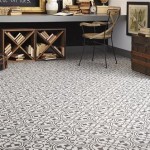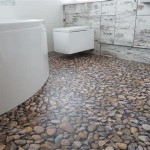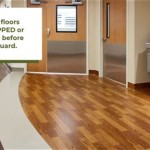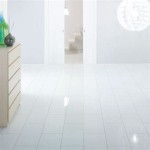How to Repair Vinyl Flooring Seams On Stairs In Singapore
Vinyl flooring is a popular choice for staircases in Singaporean homes and commercial spaces due to its durability, water resistance, and ease of maintenance. However, like any flooring material, vinyl can be susceptible to wear and tear, particularly at the seams, especially on stairs, which experience high foot traffic. Damage to vinyl seams not only detracts from the aesthetic appeal of the staircase but also poses safety hazards such as tripping. Proper repair is essential to maintain the integrity and longevity of the flooring. This article provides a comprehensive guide on how to repair vinyl flooring seams on stairs in Singapore, focusing on methods and materials suitable for the local climate and available resources.
The tropical climate of Singapore, characterized by high humidity and temperature fluctuations, can exacerbate the issues with vinyl flooring seams. Expansion and contraction of the material due to these environmental changes can weaken adhesives and cause seams to separate. Furthermore, the intense sunlight can fade or degrade certain types of vinyl and adhesives over time. Therefore, the repair process must consider these factors and utilize materials specifically designed to withstand the local environmental conditions.
Identifying the Problem and Assessing the Damage
Before embarking on any repair, it is crucial to accurately identify the type and extent of the damage to the vinyl seam. Common issues include minor gaps, lifting edges, complete separation, and damage to the underlying substrate. A thorough assessment will determine the appropriate repair method and materials required.
Firstly, inspect the entire length of the seam, noting the width of the gap and any signs of debris or residue. Use a flashlight to examine the seam closely, looking for areas where the adhesive has failed or where the vinyl has become detached from the stair nosing. Check for any signs of moisture damage, such as discoloration or swelling, which may indicate a larger underlying problem that needs to be addressed before attempting the repair.
If the gap is minimal and the edges are still relatively intact, a simple re-adhering process using appropriate adhesive may suffice. However, if the seam is significantly widened or if the vinyl is torn or damaged, more extensive repairs, such as patching or seam welding, might be necessary. In cases where the underlying substrate is damaged, it must be repaired or replaced before installing new vinyl or attempting to re-adhere the existing material. Documenting the damage with photographs can be helpful for referencing during the repair process and for potential consultations with professional flooring contractors.
Selecting the Right Repair Materials and Tools
Choosing the correct materials and tools is paramount for ensuring a durable and aesthetically pleasing repair. The selection should be based on the type of vinyl flooring, the extent of the damage, and the environmental conditions of the staircase.
For re-adhering loose seams, a high-quality vinyl seam adhesive is essential. These adhesives are specifically formulated to bond vinyl to vinyl and offer excellent water resistance and long-term durability. Ensure the adhesive is compatible with the specific type of vinyl flooring in use. For wider gaps or areas where the vinyl is damaged, vinyl seam filler can be used. This filler is designed to match the color and texture of the surrounding flooring, providing a seamless and undetectable repair. A color matching guide should be consulted to ensure the filler matches the vinyl flooring as closely as possible.
Tools required include a utility knife with sharp blades for trimming excess material; a seam roller to ensure proper adhesion; a heat gun (for certain types of vinyl and repair methods); a putty knife for applying and smoothing filler; a measuring tape for accurate measurements; a straight edge for precise cuts; and cleaning supplies, such as a damp cloth and mild detergent, for preparing the surface. Safety equipment, including gloves and eye protection, is also necessary to prevent potential hazards during the repair process. For more extensive repairs, a floor scraper may be needed to remove old adhesive or damaged underlayment.
Step-by-Step Repair Procedures
The specific repair procedure will vary depending on the nature and severity of the damage. Below are several common repair scenarios and the corresponding steps to address them effectively.
Repairing Minor Gaps and Lifting Edges:
Begin by thoroughly cleaning the affected area with a damp cloth and mild detergent. Remove any dirt, dust, or debris that may be preventing proper adhesion. Allow the area to dry completely. Apply a thin bead of vinyl seam adhesive along the edge of the seam or under the lifting edge. Carefully press the vinyl back into place, ensuring that it aligns properly with the adjacent flooring. Use a seam roller to apply even pressure and ensure a strong bond. Wipe away any excess adhesive with a damp cloth. Allow the adhesive to cure completely according to the manufacturer's instructions. Place a heavy object, such as a book, on top of the repaired area to maintain pressure while the adhesive cures. Avoid walking on the repaired area until the adhesive is fully cured.
Filling Wider Gaps with Seam Filler:
Clean the gap thoroughly, removing any loose debris or old adhesive. Apply vinyl seam filler into the gap, using a putty knife to press it firmly into place. Overfill the gap slightly to allow for shrinkage. Smooth the filler flush with the surrounding flooring, using the putty knife to remove any excess. Allow the filler to dry completely according to the manufacturer's instructions. If necessary, lightly sand the filled area to achieve a perfectly smooth surface. Clean the area again and consider applying a seam sealer to protect the repair and prevent future damage.
Repairing Completely Separated Seams:
If the seam has completely separated and the vinyl is still in good condition, begin by cleaning both edges of the vinyl and the underlying surface. Apply a generous amount of vinyl seam adhesive to both edges. Carefully align the edges and press them together firmly. Use a seam roller to apply even pressure along the entire length of the seam. Wipe away any excess adhesive with a damp cloth. If necessary, use masking tape to hold the edges in place while the adhesive cures. Allow the adhesive to cure completely according to the manufacturer's instructions. If the separated seam is significantly damaged, consider replacing the section of vinyl with a new piece. This may involve cutting out the damaged section and installing a matching piece of vinyl, using appropriate adhesive and seaming techniques.
Addressing Damage to the Stair Nosing:
The stair nosing, the overhanging edge of the stair tread, is a high-wear area and often prone to damage. If the vinyl covering the nosing is damaged, it may require replacement. Carefully remove the damaged vinyl, using a utility knife to cut along the edges. Clean the underlying surface thoroughly. Apply a new piece of vinyl, ensuring it extends over the nosing and adheres securely to the tread and riser. Use a stair nosing profile to ensure a neat and professional finish. Secure the vinyl with appropriate adhesive and use a seam roller to apply pressure. Consider installing a metal stair nosing protector to prevent future damage.
Seam Welding:
Seam welding is a technique that uses heat to fuse the edges of the vinyl together, creating a strong and waterproof seam. While more complex, it offers a durable and long-lasting solution for repairing seams on stairs. This method typically requires specialized equipment, including a heat gun and a welding nozzle. The edges of the vinyl are heated to a specific temperature, then pressed together using the welding nozzle. The heat fuses the edges, creating a seamless bond. Seam welding is best performed by experienced professionals due to the risk of damaging the vinyl if the heat is not properly controlled. Improper seam welding can lead to discoloration, warping, or weakening of the vinyl.
Preventative Measures:
Regular maintenance is crucial for preventing damage to vinyl flooring seams on stairs. Regularly vacuum or sweep the stairs to remove dirt and debris that can abrade the vinyl. Clean spills immediately to prevent staining and moisture damage. Consider using stair runners or mats to protect the vinyl from wear and tear. Avoid using harsh chemicals or abrasive cleaners, as these can damage the vinyl surface. Inspect the seams regularly for any signs of damage and address them promptly. Applying a vinyl seam sealer periodically can help protect the seams and prevent water penetration. Proper installation is also essential for preventing seam issues. Ensure the vinyl is installed according to the manufacturer’s instructions and that the seams are properly aligned and sealed.
The repair of vinyl flooring seams on stairs in Singapore requires a careful approach, considering the local climate, the type of vinyl flooring, and the extent of the damage. By following these guidelines and selecting the appropriate materials and tools, homeowners and contractors can effectively repair damaged seams, ensuring the longevity and safety of their staircases.

Staircase Wood Grinding In Singapore Landed Bit Merah Dw Floor Polishing Parquet Marble Services

How To Repair Vinyl Flooring Fixing Sc Bubbles More

Fix Lvp Stair S With Wood Filler

Staircase Wood Grinding In Singapore Landed Bit Merah Dw Floor Polishing Parquet Marble Services

Diy Lvp Laminate Floor Seam Fix Thediytraill Onthisday Tiktok

How To Repair Vinyl Flooring Fixing Sc Bubbles More

Staircase Wood Grinding In Singapore Landed Bit Merah Dw Floor Polishing Parquet Marble Services

How To Repair Vinyl Flooring Fixing Sc Bubbles More

How To Install Loose Lay Vinyl Flooring On Stairs Stepup Looselay Layflat

How To Repair Vinyl Flooring Fixing Sc Bubbles More
Related Posts








